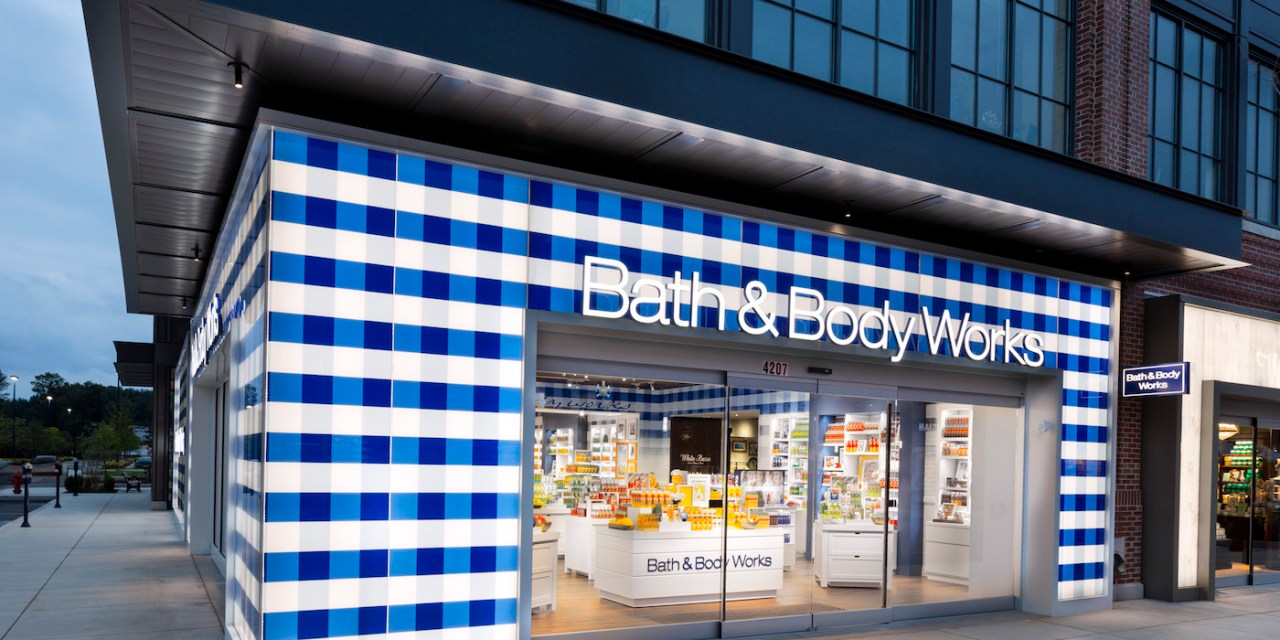How Bath & Body Works built a strategy to survive as a mall brand

As other mall brands go bankrupt around it, Bath & Body Works has managed to avoid the same fate.
The fragrance and personal-care brand’s sales growth has been fueled by successful store remodels that divide the brand’s candle business into what looks like a separate side-by-side store, merchandise that is revamped frequently to keep shoppers returning to stores, and a successful promotional strategy that encourages customers to up their average order value.
Its parent company, L Brands, reported yesterday during its first-quarter earnings call that comparable sales at Bath & Body Works were up 13% year over year, while they were flat at the company overall. L Brands CFO Stuart Burgdoerfer attributed Bath & Body Works’ success to delivering “differentiated merchandise with emotional content.” Eighteen percent of the brand’s sales last quarter came from online, compared to 14.7% a year ago.
So far, Bath & Body Works has been able to avoid the fate of other mall brands — ranging from department stores, like JC Penney and Sears, to specialty stores, like children’s clothing wear Gymboree or women’s apparel brand Charlotte Russe. When faced with declining mall traffic, these brands relied too heavily on using limited-time sales to draw people in-store, and failed to cut down their inventory enough as consumers started to prefer more streamlined in-store experience.
“[Their website] is really visually engaging. It’s difficult to sell fragrance and personal care online,” said Tiffany Hogan, a retail analyst at Kantar Consulting.
Rather than fragrances and lotions, the brand primarily features candles on its online homepage. And while it does feature some discounts prominently on the homepage, it uses them as an opportunity to upsell customers — it features buy-one-get-one discounts over 50%-off sales, for example. Neil Saunders, managing director of GlobalData Retail, said that Bath & Body Works has done a good job of using discounts that emphasize driving up volume sales, “which helps margins as customers end up buying more.”
Another key differentiating factor of Bath & Body Works’ stores and websites is that it emphasizes seasonality promoting specific candles and fragrances that are designed with summer, fall, winter and spring in mind. While retailers who focus on seasonality risk turning off consumers who want their products to have a long shelf life, Bath & Body Works has said that emphasizing seasonality has been helpful in drawing customers back to its site and to its stores, to find out what’s new. Bath & Body Works’ CEO Nick Coe said during the company’s first-quarter earnings call last year that it actually tried to rely less on a seasonal cadence in 2017, only to reverse course after discovering that’s what consumers wanted.
Bath & Body Works has also invested in remodeling its stores. Starting around 2016, the brand began a remodeling program it called White Barn, where it separated Bath & Body Works’ stores into what looked like two different stores — one side dedicated to its White Barn brand, which carries candles and another dedicated to Bath & Body Works, which carries lotions and fragrances. It’s a strategy that worked — for a time — with Victoria’s Secret and its Pink brand line of casual wear, before Victoria’s Secret’s exclusivity-focused brand fell out of favor. It makes the brands look like two separate stores, thus encouraging consumers to spend longer in each of them.
As of last year, Coe said that more than 600 of the brands’ 1600-plus stores had undergone remodeling as part of the White Barn program, and L Brands said that this year, it plans to remodel about an additional 200 stores under the White Barn program.
Looking ahead, Bath & Body Works is well positioned for the future — if the troubles of its parent company don’t drag it down. Research firm Morning Consult said that Bath & Body Works continues to remain popular among Generation Z shoppers in particular. A poll of Gen Z shoppers released earlier this week by the firm found that Bath & Body Works is the fourth-most popular brand among Generation Z women.
“They have this great word of mouth they’ve built up with the brand,” said Jeff Cartwright, vp of content for Morning Consult. “Bath & Body Works is focused on customer experience, and once they make a sale with the customer, they really nurture that relationship.”
—
Sign up for the Modern Retail Briefing to get retail news, analysis and insight delivered to your inbox every morning.

